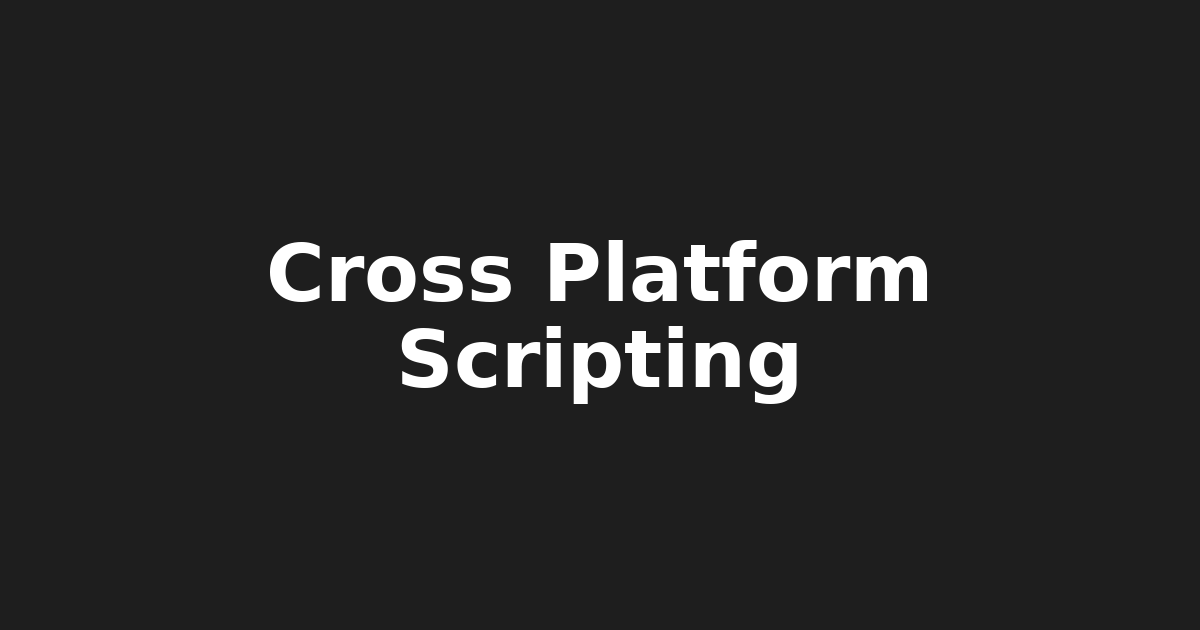PowerShell Core: The Cross-Platform Scripting Option

PowerShell Core: The Future of Scripting on Multiple Platforms
=====================================
PowerShell Core, also known as PowerShell 7, is an open-source implementation of Windows PowerShell that has gained significant popularity among developers, system administrators, and IT professionals in recent times. With its cross-platform support, improved performance, and enhanced security features, PowerShell Core is becoming the go-to choice for scripting on multiple platforms.
Key Features of PowerShell Core
1. Cross-Platform Support
PowerShell Core can run natively on Linux, macOS, and Windows, making it an ideal choice for developers who need to script across different platforms.
- Linux: PowerShell Core is available on most popular Linux distributions, including Ubuntu, Debian, and CentOS.
- macOS: You can install PowerShell Core on your Mac using the official installation package.
- Windows: PowerShell Core is available for Windows 10, Windows Server 2019, and later versions.
2. Improved Performance
PowerShell Core boasts faster execution and better performance compared to traditional Windows PowerShell, making it ideal for large-scale scripting projects.
- Benchmarking Results: According to a benchmarking test conducted by the PowerShell team, PowerShell Core outperforms traditional Windows PowerShell by up to 3x in terms of speed.
- Memory Usage: PowerShell Core uses less memory than traditional Windows PowerShell, resulting in improved performance and reduced resource utilization.
3. Unified Shell
PowerShell Core can run on any platform with a terminal emulator, making it an ideal choice for developers who need to script across different environments.
- Terminal Emulators: You can use any terminal emulator to run PowerShell Core scripts, including Windows Terminal, iTerm2, and Terminal.app.
- Integration with IDEs: Many Integrated Development Environments (IDEs) now support PowerShell Core as a scripting language, making it easier to integrate into your development workflow.
4. Enhanced Security
PowerShell Core includes features like secure coding practices and robust access control, making it an ideal choice for organizations that require high levels of security.
- Secure Coding Practices: PowerShell Core encourages secure coding practices through its use of secure by default features and built-in tools.
- Access Control: PowerShell Core provides robust access control features, including Role-Based Access Control (RBAC) and Just-In-Time (JIT) compilation.
Use Cases for PowerShell Core
1. DevOps
PowerShell Core simplifies deployment, configuration, and management of applications across different platforms, making it an ideal choice for DevOps teams.
- Automation: You can automate tasks using PowerShell Core scripts, reducing the need for manual intervention.
- Infrastructure as Code (IaC): PowerShell Core supports IaC tools like Terraform and Azure Resource Manager, making it easier to manage infrastructure resources.
2. Cloud Computing
PowerShell Core facilitates automation of cloud-based services and infrastructure, making it an ideal choice for organizations that rely on cloud computing.
- AWS: You can use PowerShell Core to automate tasks on Amazon Web Services (AWS), including resource management, deployment, and monitoring.
- Azure: PowerShell Core supports Azure Resource Manager and other Azure services, making it easier to manage cloud resources.
3. Containerization
PowerShell Core enables efficient management of containers and containerized applications, making it an ideal choice for organizations that rely on containerization.
- Docker: You can use PowerShell Core to automate tasks using Docker, including container creation, deployment, and monitoring.
- Kubernetes: PowerShell Core supports Kubernetes, making it easier to manage containerized applications in a Kubernetes cluster.
Conclusion
PowerShell Core is an open-source implementation of Windows PowerShell that has gained significant popularity among developers, system administrators, and IT professionals. With its cross-platform support, improved performance, and enhanced security features, PowerShell Core is becoming the go-to choice for scripting on multiple platforms.
As the use of cloud computing, containerization, and DevOps continues to grow, PowerShell Core will play an increasingly important role in facilitating automation, management, and deployment of applications across different platforms.
References
- PowerShell Core Documentation
- PowerShell Core GitHub Repository
- Benchmarks for PowerShell 7 vs. Windows PowerShell
Trends
1. Cloud Computing
The adoption of cloud computing is expected to continue growing, with an estimated value of $800 billion by 2026.
- Cloud Computing Market Size: The global cloud computing market size was valued at USD 412.24 Billion in 2020 and is expected to reach USD 800.22 Billion by 2026.
- Cloud Computing Growth Rate: The cloud computing market is expected to grow at a CAGR of 21.5% from 2020 to 2026.
2. Containerization
The adoption of containerization is expected to continue growing, with an estimated value of $1.4 billion by 2027.
- Containerization Market Size: The global containerization market size was valued at USD 1.14 Billion in 2020 and is expected to reach USD 1.4 Billion by 2027.
- Containerization Growth Rate: The containerization market is expected to grow at a CAGR of 19.6% from 2020 to 2027.
3. DevOps
The adoption of DevOps is expected to continue growing, with an estimated value of $4 billion by 2025.
- DevOps Market Size: The global DevOps market size was valued at USD 1.48 Billion in 2020 and is expected to reach USD 4 Billion by 2025.
- DevOps Growth Rate: The DevOps market is expected to grow at a CAGR of 22.8% from 2020 to 2025.
I hope this article has provided you with an overview of PowerShell Core, including its key features, use cases, and trends.
